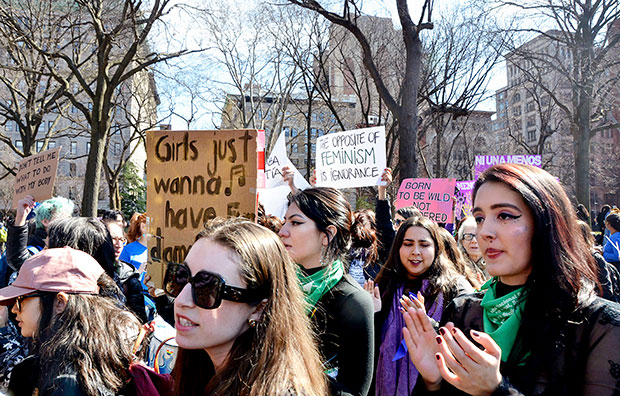
On Saturday October 2, women across the nation are marching once more for equality and justice – this time championing for women’s reproductive rights. Organizers of the 2021 Women’s March are calling participants back, once more, under dire circumstances. With the controversial near-total ban on abortion in Texas that was enacted on September 1, 2021, it’s clearer than ever that women’s reproductive rights are at stake. And as the Supreme Court of the United States readies to hear Mississippi’s Dobbs v. Jackson Women’s Health Organization – the first serious challenge to 1973’s Roe v. Wade – on December 1, now is as important a time as ever to protect women’s reproductive rights for all across the country. If you’re interested in joining the marches across the United States, here’s what you need to know:
1. The main march is held in Washington, D.C. As always, the flagship event held by the official Women’s March is taking place in D.C. Demonstrators are welcome to gather at Freedom Plaza at 10:00am ET, where a pre-rally faith service will be held to reflect on people of faith who are fighting and hoping for reproductive justice. A rally will begin at noon ET. The march itself begins at 1:30pm from Freedom Plaza along Pennsylvania Avenue and Constitution Ave towards the Supreme Court building. Permits submitted for the event with the National Park Service lists an anticipated 10,000 people. That number is on trend with the October 2020 turnout, which pales in comparison to the 100,000 D.C. marchers in 2019, and the inaugural 2017 march that drew between 440,000 – 500,000 people under Donald Trump, the day after he had been sworn in as president of the United States.
2. This Women’s March has a similar objective to the protest of 2020. In October 2021, protesters are trying to get a specific message across to the Supreme Court and lawmakers around the country: the attack on reproductive rights will not be tolerated. After the death of Supreme Court Justice Ruth Bader Ginsburg on September 18, 2020, then-President Donald Trump, alongside then-Senate Majority Leader Mitch McConnell, rushed to nominate and confirm conservative Constitutional originalist judge Amy Coney Barrett to replace one of the last liberal justices on the court. Since then, women’s reproductive rights have been at grave risk under an ever-growing conservative legal system – particularly at the state level. “Abortion has never been fully accessible, but we are at the risk of losing our reproductive freedom completely. The call to action is clear, and urgent,” the Women’s March organizers said in a statement.
“The relentless attacks from Texas to Mississippi are ramping up quickly. Anti-choice extremists have a deep desire to return to a time when there was more clear and effective domination and control over queer and trans folks, women, and people of color; they want to revive those old values and societal norms to the point of re-acceptance. The authoritarian agenda of reproductive control is fueled by misogyny and racism – and we must challenge it, together.”

3. There are 600 sister marches planned across the United States. This year, there are more than 600 satellite marches planned for the same day as the D.C. event. The two other largest marches traditionally happen in New York City and Los Angeles. On October 2, New Yorkers will be able to attend several marches across the city, with some kicking off at 11:00am ET. You can find a Women’s March event near you by searching HERE.
4. COVID-19 protections are in place. The organizers recognize that holding a massive march with potentially thousands of attendees is dangerous during the pandemic. There will be protections at the D.C. event (encouraged at the others), including hand sanitizer stations along the march route. Protesters are required to wear masks and practice social distancing. Those feeling ill should stay home and join one of the virtual events instead. Proof of vaccination will not be required to attend the march but increased vaccination coverage in a community does reduce the risk of infection against COVID-19, including the Delta variant. Anyone interested in learning about vaccination rate coverage in D.C. can do so by visiting HERE.

5. There are virtual events planned, as well. In order to encourage would-be attendees to stay home if they’re experiencing symptoms of COVID-19, the Women’s March has planned a number of virtual events. That includes live streams, phone banking, and more — see them all HERE.


